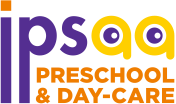Imagination stands as the catalyst for a child’s growth, development, and boundless potential. It serves as the gateway for exploration, creation, and transcending the limits of reality. Recognizing the profound impact of imagination on child development, Ipsaa, a distinguished childcare and learning centre, has crafted an environment where dreams find their wings. Within this article, we’ll delve into the paramount role of imagination in nurturing young minds, exploring Ipsaa’s innovative methods to spark and nurture this vital aspect. Join us on this odyssey as we uncover how Ipsaa unfurls the limitless possibilities within every child’s imagination.
1. Unlocking the Power of Imagination in Children
1.1 The Importance of Imagination in Child Development
Imagination is the magical ingredient that brings dreams to life and sparks creativity in children. It is the superpower that allows little minds to soar beyond the here and now, exploring new worlds and ideas. But imagination isn’t just about playing make-believe; it plays a vital role in a child’s overall development.
From a young age, children develop their imagination through pretend play, storytelling, and creative expression.”It helps individuals to comprehend their surroundings, establish social relationships, and interpret their emotions. The skill to think creatively and visualise various scenarios forms the basis for resolving issues, generating new ideas, and developing critical thinking abilities in the future.”
2. Ipsaa: A Haven for Nurturing Imagination
2.1 Ipsaa’s Vision and Mission
Enter Ipsaa, a magical haven where children’s imaginations run wild and dreams come true. Ipsaa is not just another childcare centre; it is a nurturing space that recognizes the importance of imagination in a child’s growth and development.
2.2 Ipsaa’s Commitment to Imagination
Ipsaa has a vision to inspire and empower young minds through a holistic approach to early childhood education. Its mission is to create an environment that encourages creativity, curiosity, and self-expression. Ipsaa aims to celebrate and nurture imagination every step of the way.
At Ipsaa, imagination is not an afterthought but at the core of everything they do. From the carefully designed learning spaces to the thoughtfully curated activities, Ipsaa is committed to unleashing the full potential of a child’s imagination.
3. The Importance of Imagination in Child Development
3.1 Cognitive and Emotional Benefits of Imagination
Engaging in imaginative play has profound cognitive and emotional benefits for children. Their brains light up with activity, fostering cognitive development and enhancing problem-solving skills. Creating scenarios teaches them to think critically, make decisions, and find innovative solutions.
On an emotional level, imagination helps children explore and express their feelings. It allows them to step into different roles and perspectives, building empathy and social skills. Children learn to navigate complex emotions, practice self-regulation, and develop resilience through imaginative play.
3.2 Imagination as a Key to Problem-Solving and Innovation
Furthermore, as children grow into adults, imagination continues to be a valuable asset. It fuels innovation and creativity, allowing individuals to think beyond expectations and find new ways to tackle challenges. Imagination is the secret ingredient that has shaped our world, from scientific breakthroughs to artistic masterpieces.
4. Ipsaa’s Innovative Approaches to Stimulate Imagination
4.1 Reggio Emilia Approach: Inspiring Imagination through Child-Led Learning
Ipsaa is not just talk; it walks the walk when it comes to stimulating imagination. Ipsaa provides a nurturing environment through innovative approaches where imaginations can flourish and dreams can take flight.
4.2 Imaginative Storytelling: Igniting Creativity and Narrative Skills
One such approach is the Reggio Emilia approach, which encourages child-led learning and exploration. By allowing children to take the lead in their learning journey, Ipsaa fosters imagination, curiosity, and problem-solving skills. Children are free to explore their interests, ask questions, and create their own unique paths of discovery.
Imaginative storytelling is another powerful tool used by Ipsaa to ignite creativity and narrative skills. Children can enhance their language, communication, and critical thinking skills by experiencing different worlds through captivating tales, which also nurtures their ability to express themselves.
4.3 Art and Craft: Unleashing Imagination through Expressive Creation
Art and craft activities at Ipsaa provide children with endless opportunities to unleash their imaginations through expressive creation. Whether it’s painting, sculpting, or building, children are encouraged to explore their creativity, experiment with materials, and bring their ideas to life. These hands-on experiences stimulate imagination and allow children to see themselves as capable artists and designers.
At Ipsaa, imagination is not just a fleeting thought; it is the foundation on which children’s dreams are built. With its commitment to nurturing imagination and providing innovative approaches, Ipsaa is truly a place where imaginations are unleashed and dreams are brought to life.aa Unleashes Children’s Imagination
5. Creating an Imaginative Environment: Ipsaa’s Unique Facilities
5.1 Thoughtfully Designed Spaces to Spark Imagination
At Ipsaa, we understand the power of the environment in fueling a child’s imagination. That’s why our facilities are meticulously designed to inspire wonder and creativity. From vibrant colours to whimsical decorations, every corner is crafted to ignite the imagination of young minds. We believe that when children are surrounded by beauty and enchantment, their imagination knows no bounds.
5.2 Imaginative Play Areas: Encouraging Pretend Play and Role-Playing
Play is the language of children, and at Ipsaa, we speak it fluently. Our imaginative play areas are like portals to magical worlds where children can become anyone they want to be. From a bustling kitchen where aspiring chefs whip up imaginary delicacies to a mini construction site where future architects build skyscrapers with blocks, these play areas spark creativity, nurture empathy, and teach kids invaluable life skills through the power of make-believe.
5.3 Outdoor Spaces: Connecting Imagination with Nature
Nature provides an infinite canvas for children’s imagination, and Ipsaa’s outdoor spaces are designed to harness its boundless potential. Our lush gardens, sandpits, and climbing structures invite children to embark on adventures, build castles, and explore the natural world. Whether it’s digging for treasure in the sand or pretending to be intrepid explorers in the jungle, these outdoor spaces encourage children to not only dream but also connect with the wonders of the earth.
6. Encouraging Creativity and Imagination through Play and Exploration
6.1 Play-Based Learning: Inspiring Imagination through Playful Activities
At Ipsaa, we believe that learning should be a joyful and imaginative experience. That’s why we incorporate play-based learning into our curriculum. Through engaging activities and games, children are encouraged to explore, question, and use their imagination to solve problems. Whether it’s building a structure with blocks or reenacting a story through puppets, play becomes a gateway to unlocking their creativity and curiosity.
6.2 Sensory Play: Stimulating Imagination through Multisensory Experiences
The world is a sensory wonderland, and sensory play at Ipsaa allows children to fully immerse themselves in the magic. From squishy materials to texture exploration bins, these experiences stimulate their senses and ignite their imagination. As children mould, shape, and experiment, they not only develop important motor skills but also express themselves creatively, turning the mundane into something extraordinary.
6.3 STEAM Activities: Merging Imagination with Science, Technology, Engineering, Arts, and Math
Imagination is the secret ingredient that fuels innovation, and Ipsaa’s STEAM activities blend the worlds of imagination and education seamlessly. Through hands-on projects that merge science, technology, engineering, arts, and maths, children are encouraged to think outside the box, embrace their curiosity, and push the boundaries of what is possible. From designing their own inventions to creating art inspired by science, these activities provide fertile ground for their imagination to thrive.
7. The Role of Ipsaa’s Educators in Fostering Imagination
7.1 Trained and Passionate Educators: Guiding Children’s Imaginative Journey
At Ipsaa, we believe that educators play a crucial role in nurturing a child’s imagination. Our teachers are not just knowledgeable and experienced but also passionate about fostering creativity. They serve as facilitators, assisting children on their imaginative journey and equipping them with the necessary tools and inspiration to bring their imaginative ideas to life. Through their guidance, children learn to trust their imagination and cultivate the courage to venture into new realms of possibility.
7.2 Strategies for Cultivating Imagination in the Classroom
Ipsaa’s educators employ various strategies to cultivate imagination in the classroom. They create a safe and inclusive space where children feel comfortable expressing themselves and taking creative risks. They foster a sense of wonder by asking open-ended questions and encouraging children to explore multiple perspectives. They also incorporate storytelling and imaginative play into their lessons, allowing children to immerse themselves in narratives and develop empathy for different characters. Through these intentional approaches, Ipsaa’s educators empower children to embrace their imaginations and become lifelong dreamers.

